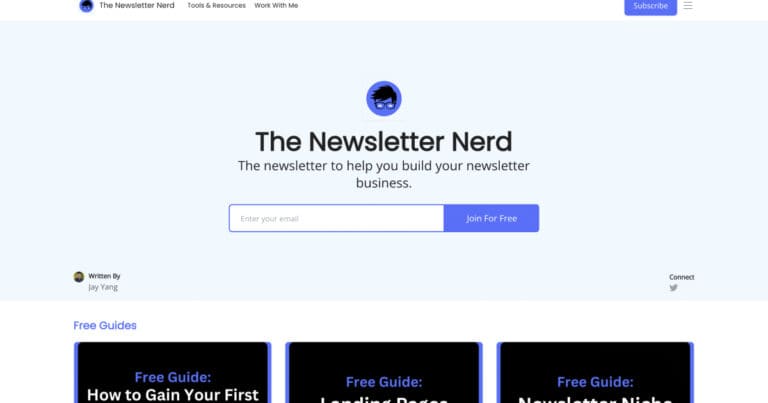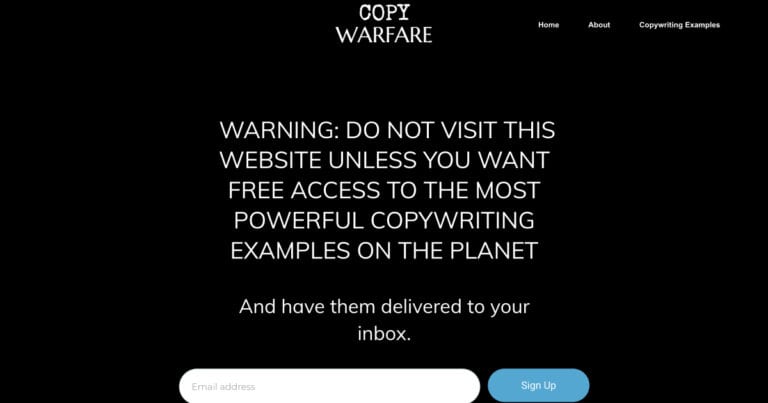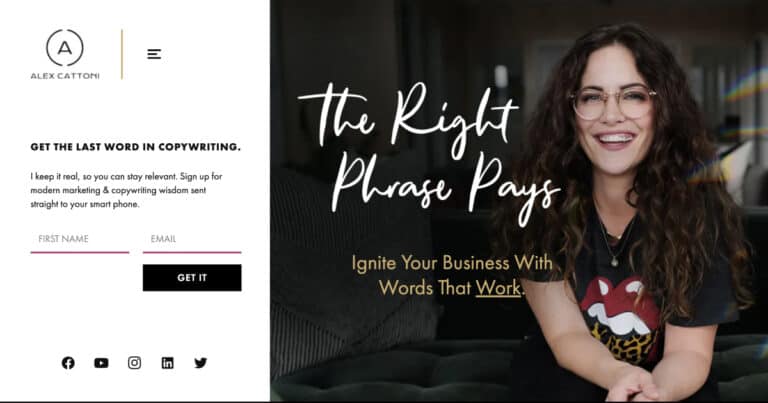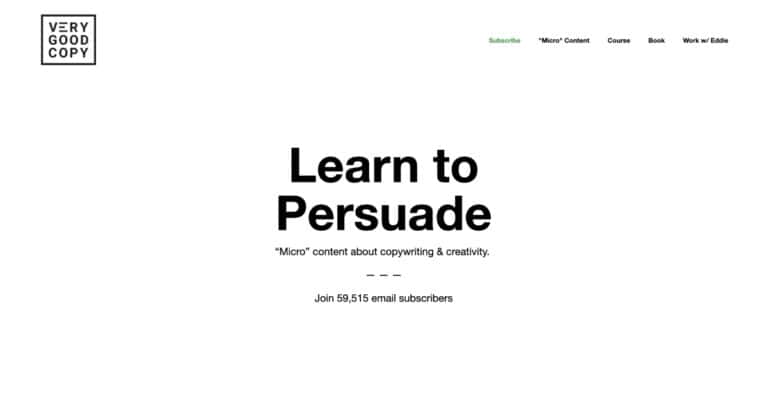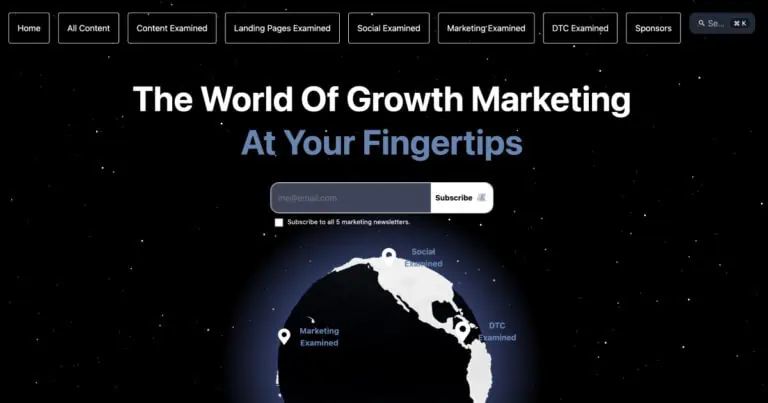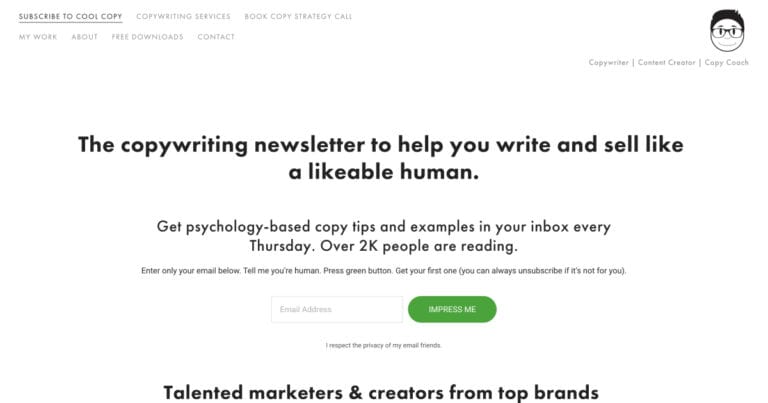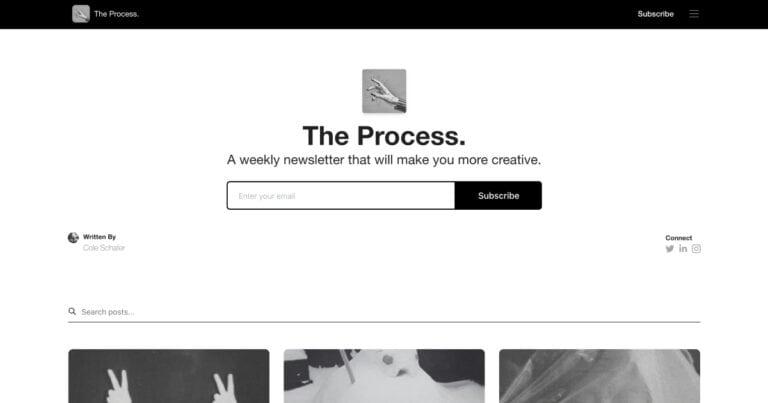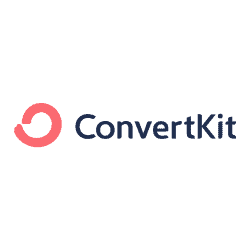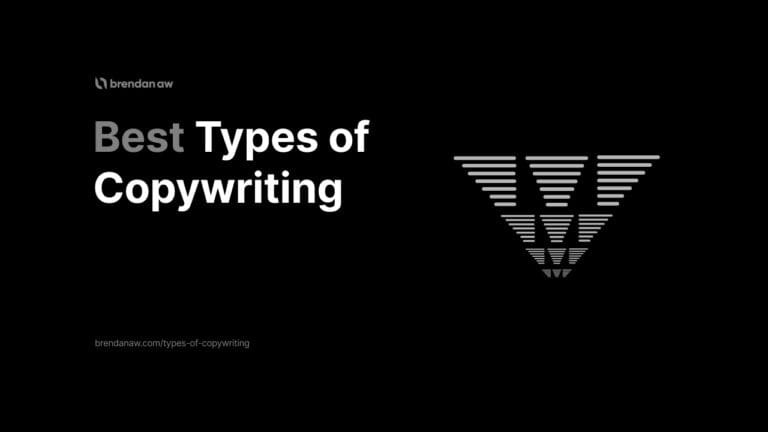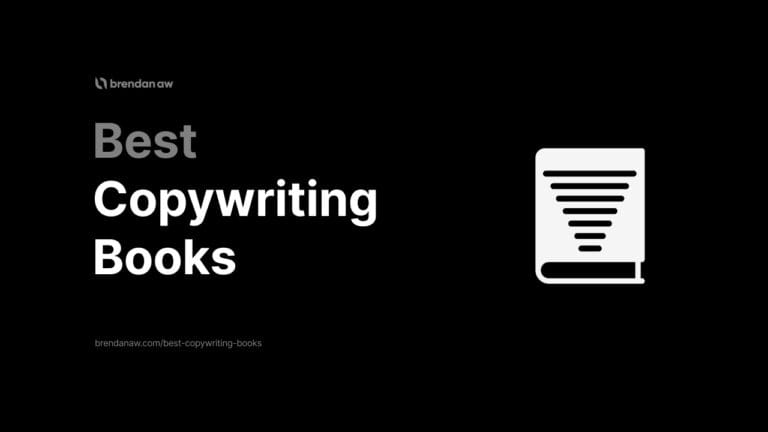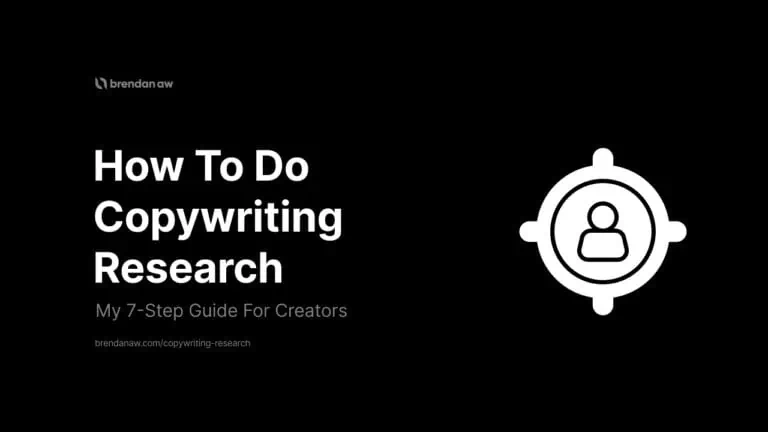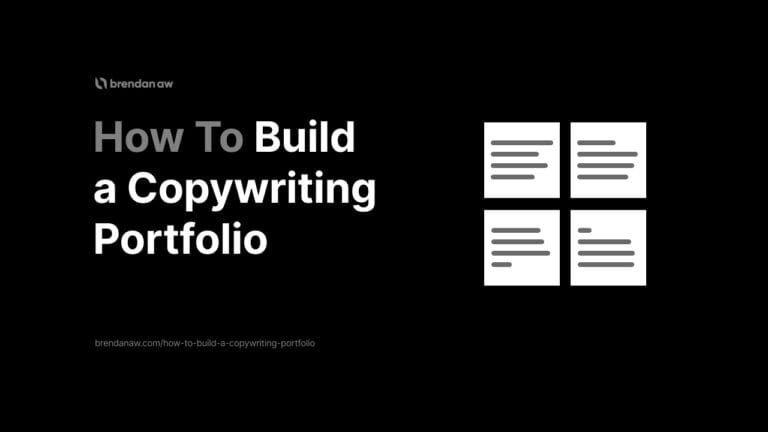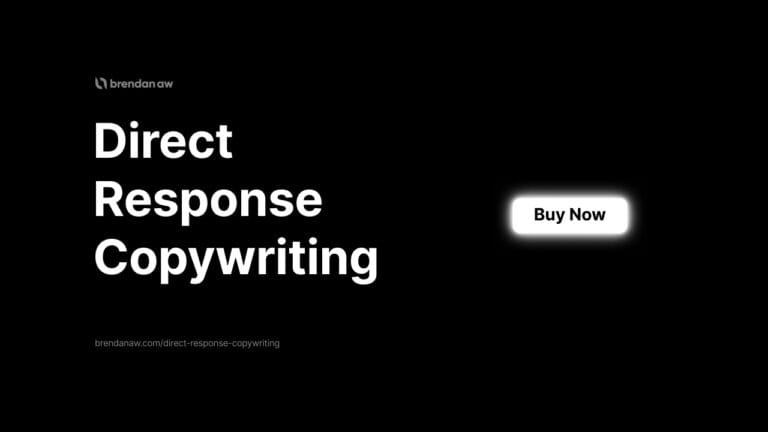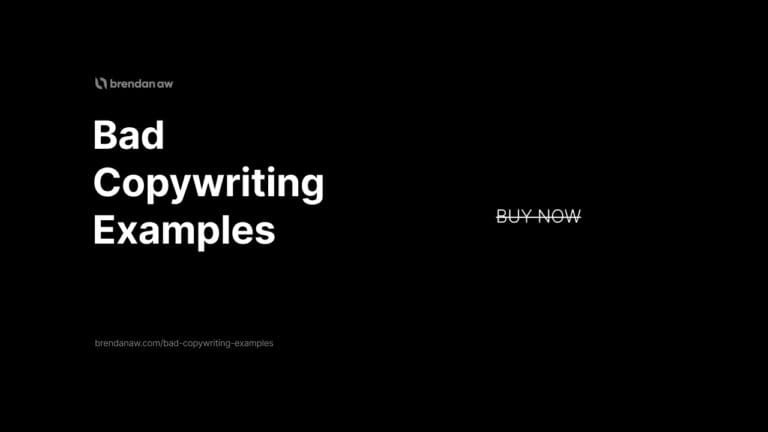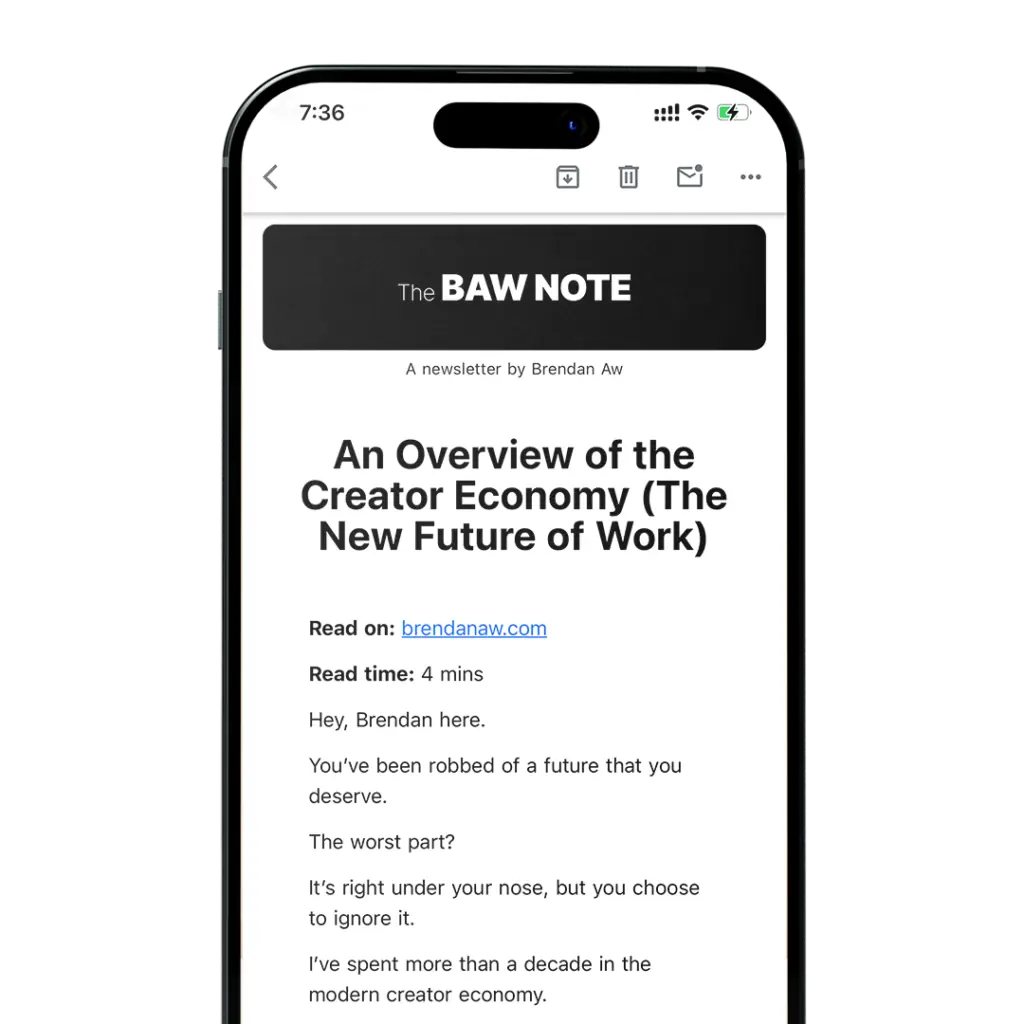You’re full of ideas, but you can’t seem to make your newsletter flow.
Is that you?
Newsletter copywriting isn’t difficult.
You need structure.
In this article… I’ll show you:
- What newsletter copywriting is
- What makes an irresistible newsletter
- How to write one
- And the best copywriting tips to make them compelling
Interested?
Keep reading.
What is newsletter copywriting?
Newsletter copywriting is a specialized type of copywriting that aims to engage and persuade readers through email newsletters.
Unlike general copywriting, which can span various mediums and purposes…
Newsletter copywriting is tailored to the unique dynamics of email communication.
Most newsletter content involves…
- Sending periodic updates and content to email subscribers
- Crafting persuasive messages that entice readers to scroll further and take action.
While newsletters and copywriting aim to engage the reader…
The key difference lies in the intent.
Typical newsletter content aims to inform, entertain, or update your email subscribers.
So when does it turn into a copy?
When it encourages the reader to take action.
Newsletter content becomes copywriting when there’s a clear call-to-action (CTA).
One that nudges the reader towards a specific action like:
- Making a purchase
- Booking a consultation
- Signing up for a webinar
It’s also important to understand who you’re writing for.
These are individuals who have already expressed interest in your content…
Enough to subscribe to your email list.
Now that you have an interested audience…
Your next goal is to nurture them using an email marketing funnel.
What are the main components of good newsletter copy?
The average length of newsletters is between 200 to 2500 words.
Despite the brevity… a high-performing newsletter consists of several parts.
Let’s go through each of those.
Subject line
This is the most important part of a newsletter.
The best offer and copy are useless if the subject line does not capture your audience.
The subject line is the text that appears in the recipient’s inbox.
Its purpose is to grab the reader’s attention and get them to open the email.
So what makes a good subject line?
Good subject lines are
- brief,
- attention-grabbing,
- and intriguing.
They provide context without overloading it with details.
Also… avoid clickbait subject lines at all costs.
These will ruin the trust you’ve already established.
Subject lines should accurately reflect your content.
Preheader text
The preheader or preview text is a quick snippet of information following the subject line.
The goal here is to provide additional context about the email.
But remember this…
The preheader shouldn’t give everything away.
This sentence is about hooking your readers. Not explaining.
Also… It’s crucial to ensure the preheader looks good on mobile devices.
Various factors affect character limits like:
- Screen size
- User’s mobile orientation
- The phone’s default text size
- Etc.
Keep it as concise as possible to avoid truncation.
Lead
The lead is the opening paragraph of your newsletter.
The goal is to welcome your readers and persuade them to continue reading.
Here are some best practices for writing a magnetic lead copy:
- Start with a thought-provoking question to spark curiosity. Have you ever wondered how to make your savings work harder for you?
- Describe a relatable scenario that resonates with your audience’s experiences. Picture this… You’re on the verge of a breakthrough, but self-doubt holds you back.
- Begin by acknowledging a common pain point. Finding high-quality leads is hard… trust me, I’ve been there.
The opening paragraph sets the tone for the whole content.
So, make it clear right off the bat.
Body
This is the meat of your email.
It’s where you communicate your core message to the readers.
This is the section where you add all the necessary details.
But be careful…
Avoid veering off-topic.
Ensure the body copy directly addresses the topic promised in the subject line.
And stick to it…
It’s because people hate click-bait subject lines.
That’s how you get high bounce rates.
Do these instead:
- Offer valuable information
- Give unique insights
- Provide solutions to your reader’s problems
Your content should leave readers feeling informed or empowered.
Add relatable stories, case studies, or anecdotes to illustrate your points.
Call-to-action
The CTA directs readers toward the action you want them to take.
Newsletter CTAs come in various forms, such as:
- Plain text (e.g. encouraging a reply)
- Links
- Buttons
But all of these have a single mission…
That is to communicate the “next step” you want your readers to follow.
How to write good newsletter copy?
Writing newsletters is easy.
But writing great ones…. consistently?
That’s on another level.
So here are my top copywriting tips for writing high-performing newsletters.
1. Know your audience
If there’s one thing that would make the biggest impact when you’re writing copy…
It’s understanding your audience inside out.
There’s no point in writing the best copy if it’s sent to the wrong audience.
So how can you deeply understand your audience?
Start by creating detailed buyer personas.
These will represent different segments of your audience.
Consider these:
- Demographics: Age, gender, educational background, and location
- Psychographics: Interests, values, and buying behaviors
- Triggers/Drivers: Pain points, goals, and challenges
So the question is…
How can I gather this information?
You gotta do your research.
The best way to gain insights is to talk directly with your audience.
You can do this by:
- Conducting surveys
- Creating polls
- Social media interactions
And if you have sent a couple of newsletters before…
Look at your analytics to see which content performs best and resonates with your audience.
Here’s what to look for:
- Open-rates
- Click-through rates
- Bounce rates
- Engagement metrics (e.g. replies)
Once you’ve gathered enough insights… you’re left with just two tasks:
- Align your newsletter copy with your audience’s needs and desires…
- And speak their language to resonate with them.
2. Develop a unique brand voice
Everyone hates reading newsletters from a faceless corporation…
So show the personality behind the brand.
Here’s how:
Establish your brand voice
Your brand voice is the personality behind your brand.
Do you want to be seen as someone witty?
Or someone more serious?
Here are some brand voices used by popular brands:
- Nike: Inspirational and powerful
- Apple: Elegant and innovative
- Coca-Cola: Fun and nostalgic
- Adidas: Energetic and youthful
- Spotify: Playful and trendy
Developing a consistent voice helps your readers recognize your content across various platforms.
It’s what makes your brand memorable and relatable.
Define your tone
If your brand voice is your personality…
Your tone is how you would communicate that.
It will depend on two things:
- Your brand identity
- The relationship you want to foster with your audience
So ask yourself…
Which tone would present you the best?
Here are a few examples of different tones you could go for:
- Formal
- Informal
- Professional
- Conversational
- Authoritative
- Playful
Your tone and voice should align seamlessly.
But here’s the thing…
All that hard work would be useless if you’re not consistent.
Consistency is key to establishing brand recall.
Your tone and voice should remain steady throughout your newsletter content.
3. Write concise and skimmable copy
Attention spans are now shorter than ever.
And readers want to feel their attention is valued.
“How can I do that?”
- Get straight to the point.
- Keep your copy concise and scannable.
This is how you keep your readers engaged…
And ensure that they get the most out of your newsletter.
Start by trimming unnecessary fluff from your content.
Every word should serve a purpose.
The goal is to say more using fewer words.
Also… large blocks of text are everybody’s pet peeve.
Break down your content into smaller and digestible chunks.
Do this by:
- Using bullet points
- Utilizing descriptive subheadings
- Breaking lines every 1 to 2 sentences.
But remember: Do NOT sacrifice depth for brevity.
Instead… focus on presenting your content directly and comprehensively.
4. Focus on one idea
Every newsletter should focus on a single main idea.
Why though?
Giving more information in one go may seem like you’re providing more value…
But it can overload readers with too much information.
So the beginning section of the newsletter should be short and straightforward.
That will hook the reader.
Be strategic about how you would prioritize your key messages.
Use the inverted pyramid approach… Put the most significant information at the top.
So even if readers only skim the beginning…
They still grasp the main points.
Also… I keep the number of sections to under five.
This ensures that my newsletters are hyper-focused on one topic only.
5. Include personalization
Emails from our friends have a 100% open rate.
Not only that.
You are likely to read the whole email.
So if you’re struggling with lower clicks…
Write as if it’s for a friend.
Here are a few ways to personalize your copy:
- Customize the subject line with the reader’s first name. (Most email marketing software have custom value features to do this)
- Use a more conversational tone throughout the body.
- Address readers directly with second-person pronouns (e.g., you and your)
A personalized approach is the quickest way to increase engagement.
6. Share your story
Storytelling is a time-tested tool in copywriting.
We share stories to:
- Capture attention
- Sell an idea
- Influence other people’s behavior
Although the medium of storytelling has changed through the years…
Its impact remains the same.
Here are a few tips to tell stories that will grip your readers:
Show, don’t tell
Do not tell readers what happened. Show them.
Use vivid descriptions and sensory details.
This will help readers visualize and immerse themselves in the story.
Craft relatable stories
The more personable your stories are… the better.
You can share:
- Personal experiences
- Client incidents
- Customer success stories
- Industry anecdotes
- And more
Readers are more likely to engage if they can see themselves in your stories.
Tie it to the message
Do not tell a story for the sake of telling one.
Remember: You are writing a copy.
You must drive an action.
So, it’s critical to tie each story to your main message.
Ensure that the lessons from your story directly relate to it.
Avoid tangents that could lead readers away.
7. Highlight the benefits
I hate to break it to you, but…
People don’t care about what you have to say unless you address “WIIFM.”
“What’s In It For Me?”
So clearly communicate your value.
How can you do this, you ask?
Here’s how. Identify your readers’:
- Problem
- Pain points
- Needs
- Desires
Then show how your product addresses those issues.
Say you are a fitness coach, and you help people lose weight…
Losing an extra 10 lbs is a benefit… right?
Correct.
But here’s how you can take things to the next level…
Introduce angles that would tap into their emotions. Here are a few examples:
- How would your family benefit from a healthier and fitter you?
- What would losing an extra 10 lbs do for your self-confidence?
- Increase your physical attractiveness by being 10 lbs leaner.
Evoke that unique emotion from your reader to create a stronger connection.
8. Use active voice
There’s nothing wrong with writing in passive voice.
But if you want to convey authority…
Format your sentence to active voice.
Here’s an example:
- Passive voice: The email was sent by the marketing team.
- Active voice: The marketing team sent the email.
The latter sentence is more direct and clear.
This is the tone you want to employ in your copy.
I use the Hemmingway App to spot passive voice sentences in my writings.
9. Avoid spammy keywords
Low deliverability is an email copywriter’s worst enemy.
Imagine spending hours crafting your product launch email…
Only to land on the reader’s promotions tab.
Or worse…
On their spam folder.
Email service providers are getting more sophisticated in filtering spam.
While this means great security…
It also means a poorly crafted email is bad for your email marketing.
It also means a greater risk for deliverability issues.
How do you evade the spam police?
Avoid the triggers.
I reference HubSpot’s spam trigger list regularly.
Also… refrain from improper formatting.
These are:
- Excessive use of emojis
- Varying case letters
- Repeating special characters
There’s no magic pill to ensure all your emails arrive in your audience’s primary inbox.
However, you can optimize the choice of words and formatting to increase your deliverability rate.
Why is newsletter copywriting important?
If you’re building a creator business…
You MUST master writing newsletters.
Here’s why:
1. Promotes audience retention
Staying on top of mind is the name of the game.
Newsletters are about delivering consistent value to your readers.
Effective copywriting will establish your content as a reliable source of information.
That means readers are more likely to stick around.
2. Increases conversion and sales
Starting a newsletter is a core monetization channel for creators and businesses.
It’s a great medium to:
- Tell stories that resonate
- Showcase social proof
- Use effective CTAs
Well-crafted newsletter copy has the power to turn subscribers into satisfied customers.
Also… your audiences have subscribed to your email list for a reason.
You’re talking to a group already interested in your words.
All you must do is confirm they made the right decision…
And move them further into their customer journey.
Check out my article on how to monetize a newsletter too.
Quantifies outcomes
Newsletter copywriting leaves no room for guesswork.
Because it is measurable.
Every email marketing service provider has features to show your stats.
These metrics are objective indicators that show how well your newsletter performs.
Open rates. Click-through rates. Bounce rates.
You name it.
You’ll have access to it.
Use these data to optimize your strategy.
Creates deeper relationships
Why write newsletters when you have blogs and social media?
Sure.
Blogs and social media posts have a wider reach…
But these are public content.
They don’t create a personal connection.
You can’t foster deep relationships by blasting out content for everyone to see.
Those channels are good for catching attention and piquing interest.
But to keep that interest…
And actually grow it into a more meaningful relationship…
You have to speak to them directly.
And newsletters are the perfect way to do that.
Because you can target specific audiences with it.
It allows you to tailor your content to the preferences of individual recipients.
Best copywriting newsletters
If you’re not subscribed to a copywriting newsletter…
You’re missing out.
It will give you direct access to:
- Latest industry trends
- Best copywriting tips
- Real-world samples from the best copywriters
- And more
But here’s the thing…
There are gazillions of newsletters flying around.
How do you know which ones are worth subscribing to?
I followed tons of newsletters to improve my skills…
Some of it is just noise in my inbox.
And some are a gold mine for copywriters.
So here’s a list of the best copywriting newsletters to help you get started:
The BAW NOTE by Brendan Aw
Call me biased, but if you like my blog…
You’ll love my newsletter, “The BAW NOTE.”
I don’t just dish out copywriting theories…
I take you behind the scenes of building a creator business.
But there’s more.
- Holistic Approach: I explore copywriting as a skill and a vital component in a successful creator business.
- Actionable Tips: Get hands-on advice to elevate your creator business, not just generic “best practices.”
- Real Projects: I pull back the curtain on my current projects, giving you an insider’s look at what works (and what doesn’t).
- Curated Wisdom: Benefit from a carefully selected roundup of insights and resources that have caught my eye.
Remember those newsletter copywriting tips from earlier?
You’ll see them in my newsletters.
If you’re after more than just copywriting tips and a 360-degree view of succeeding as a creator…
It’s free.
Newsletter Nerd by Jay Yang
Jay Yang started this to give actionable tips about growing newsletters.
I must say…
The kid is sharing invaluable insights.
He’s explaining marketing concepts and sharing actionable tips every week.
You’ll learn how to:
- Write your landing page copy
- Track your conversion rates
- Craft the top 5 types of newsletters
- And more
Learning the intricacies of newsletter business will propel your copywriting game.
Copy Warfare by Andrew Holland
Copy Warfare stands out for its tactical approach to copywriting.
Andrew shares real-life A/B testing data.
He also breaks down successful campaigns to provide invaluable insights.
This is the place to be for writing data-driven copy.
Aside from case studies… he also shares resources about:
- Content marketing
- Link building
- Entrepreneurship
- LinkedIn strategies
This holistic approach will show you how copy fits into the larger marketing landscape.
Alex Cattoni’s Newsletter
Alex was once a Creative Director at Mindvalley.
Started her freelance business and grew it into an agency.
In-house copywriting. Freelancing. Marketing Agency.
She’s done it all.
That’s how you know she’s on top of her game.
Her two-decade experience is shown in her newsletters.
It’s worth subscribing to if you’re looking for:
- Anecdotes for copywriters
- Examples of flavorful copy
- Resources to widen your vocabulary
- Money-making advice as a copywriter
- Actionable tips to learn marketing
Not to mention, she has a huge following on YouTube.
But the best part?
Her newsletters are not just repurposed content.
Most of the time, her emails are unique.
And she’s pumping those out at a high volume…
I’ve had weeks where I’m receiving an email almost every day.
So if you’re looking for copy inspo… you’ll never run out.
Very Good Copy by Eddie Shleyner
Very Good Copy teaches how copywriting and content marketing work together.
Eddie was a former Copy Chief at G2.com.
Now he’s running one of the biggest copywriting newsletters today.
Here are the content you can expect from Very Good Copy:
- Copywriting Techniques: Provides tips on headline writing, storytelling and persuasive writing
- Content Marketing Strategies: Offers guidance on creating engaging content and developing a content marketing plan
- Conversion Copywriting: Covers topics such as writing effective CTAs and optimizing landing pages
And you’ll have access to 6 free micro-courses on marketing and sales.
Because of that…
Very Good Copy has earned its spot in my inbox.
Marketing Examined by Alex Garcia
Marketing Examined is a great resource to see the ins and outs of copywriting businesses.
Alex Garcia will walk you through the current projects he’s working on…
And his past projects.
He’s got a TON of those.
I remember receiving an email from him…
The topic was about his learnings after writing 300+ landing pages.
It’s insightful and detailed.
It was a long email, for sure…
But it’s certainly worth reading.
That’s just one of the multiple emails he sends out every week.
Also… he has a good conversational writing style.
Cool Copy by Terry Schilling
You’ll get one psychology-based copy tip every Thursday.
But don’t think Cool Copy is all about boring theories.
He starts by breaking down real-world applications…
And then dissects the principles and copywriting frameworks behind it…
So you can replicate it for your copy.
This newsletter will encourage you to explore different practices.
So if you want to inject originality into your copy…
Cool Copy is your go-to source.
Sticky Notes by Cole Schafer
I know it’s story time whenever I’m reading an email from Cole.
He shares his collections of success stories from time to time…
But his storytelling skills are superb.
He’s got a bold and charismatic writing style.
And while his emails are a little lengthier than some others on this list…
The stories will immerse you in the piece.
Sticky Notes’ headlines are also thought-provoking.
You can’t help but click it once you read it in your inbox.
This weekly newsletter will teach you how to tell compelling stories.
Newsletter copywriting (FAQs)
What Are Some Common Mistakes To Avoid in Newsletter Copywriting?
The most common copywriting mistake I see with newsletters is writing copy that makes sense to them, not their audience.
Other bad practices include:
• Using too much fluff
• Not proofreading
• Writing long and complex sentences
How Can I Make My Newsletter Copy More Engaging?
Talk about your audience and write reader-focused copy. This will help you create engaging content without needing to be captivating or charismatic.
How Do I Measure the Success of My Newsletter Copy?
You can measure the success of your newsletter by tracking metrics such as:
• open rates
• click-through rates
• conversion rates
Every email marketing service provider has dashboards to show you these stats.
To Sum Up
An email newsletter is one of the pillars of a creator’s business.
It’s how you establish meaningful relationships with your followers.
Writing great email copy will cultivate a loyal community around your brand.
I shared with you my best tips for newsletter copywriting.
All that’s left to do is to execute it.
P.S. One more thing before you forget…
Join my creator newsletter inner circle.
I share insider tips on building my creator business with actionable tips to grow yours in 5 mins or less.


